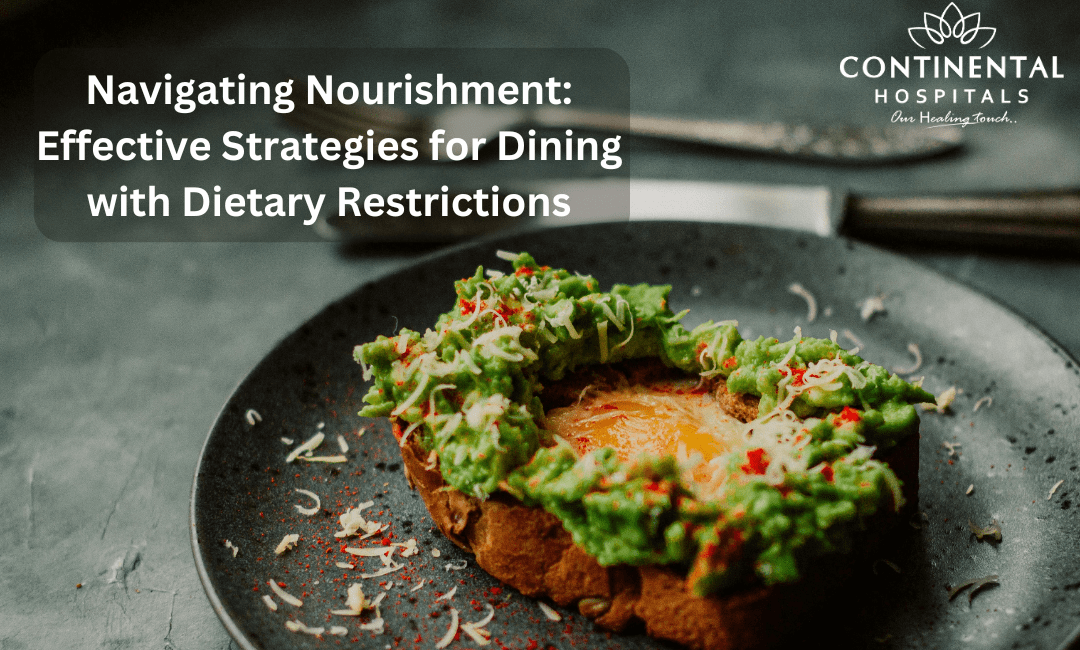Dining out should be a delightful experience, an opportunity to indulge in delicious flavors and enjoy the company of friends and family. However, for individuals with dietary restrictions, the prospect of dining out can often be accompanied by feelings of apprehension and uncertainty. Whether it's due to food allergies, intolerances, or personal dietary choices, sticking to a specific eating plan while navigating restaurant menus can feel like a daunting task. Yet, with the right strategies and mindset, dining out with dietary restrictions can be not only manageable but also enjoyable. In this guide, we'll explore effective strategies for navigating the culinary landscape while honoring your dietary needs. From mastering the art of communication with restaurant staff to deciphering menu options and beyond, let's embark on a journey to discover how to savor every bite without compromising your health or preferences.
Understanding Dietary Restrictions: Types and Impacts
Dietary restrictions can vary widely, ranging from medically necessary restrictions, such as those related to allergies or intolerances, to lifestyle choices, such as vegetarianism or veganism. Each type of restriction comes with its own set of challenges and considerations. For example, individuals with food allergies must be vigilant about avoiding specific ingredients to prevent potentially life-threatening reactions, while vegetarians and vegans may need to ensure they're getting adequate nutrition from plant-based sources. Understanding the type and impact of your dietary restrictions is the first step toward successfully navigating dining experiences.
Effective Communication: Advocating for Your Needs
One of the most crucial strategies for dining with dietary restrictions is effective communication with restaurant staff. Clear and respectful communication can help ensure that your dietary needs are understood and accommodated. When making a reservation or upon arrival at the restaurant, don't hesitate to inform the staff about your dietary restrictions. Be specific about your needs, and don't be afraid to ask questions about menu options or ingredient substitutions. Most restaurants are willing to accommodate dietary restrictions, but they need to know about them in advance.
Menu Navigation: Finding Safe and Delicious Options
Navigating a restaurant menu with dietary restrictions can feel overwhelming, but with a little know-how, it's possible to find safe and delicious options. Start by scanning the menu for dishes that naturally align with your dietary needs. Look for simple, whole-food options that are less likely to contain hidden allergens or ingredients that don't align with your dietary preferences. Additionally, don't hesitate to ask your server for guidance or clarification about specific menu items. They can often provide insights or suggest modifications to accommodate your needs.
Preparation Tips: Planning Ahead for Success
Preparation is key when dining out with dietary restrictions. Before heading to a restaurant, take some time to research the establishment and familiarize yourself with the menu. Many restaurants now offer online menus with detailed ingredient lists, which can be invaluable for those with dietary restrictions. If possible, call ahead to inquire about specific menu options or to alert the restaurant to your dietary needs. Additionally, consider bringing along safe snacks or emergency food items in case suitable options are limited.
Eating Out Safely: Avoiding Cross-Contamination and Hidden Ingredients
Cross-contamination and hidden ingredients are common concerns for individuals with dietary restrictions. Cross-contamination can occur when food comes into contact with surfaces or utensils that have previously been in contact with allergens or other restricted ingredients. To minimize the risk of cross-contamination, communicate your needs clearly to restaurant staff and inquire about their protocols for preventing cross-contact in the kitchen. Additionally, be vigilant about reading ingredient labels and asking questions about preparation methods to ensure that your meal is safe to consume.
Exploring Culinary Diversity: Embracing New Flavors and Cuisine
While dining out with dietary restrictions can sometimes feel limiting, it's also an opportunity to explore new flavors and cuisine. Many cultures around the world have rich culinary traditions that naturally align with various dietary preferences and restrictions. Branch out and try ethnic restaurants that offer vegetarian, vegan, or gluten-free options. You may be surprised by the delicious and satisfying meals you discover when you're open to culinary diversity.
Navigating Social Situations: Handling Dining Challenges with Grace
Dining out with dietary restrictions can sometimes present social challenges, especially when dining with friends or family who may not share the same dietary preferences. It's essential to approach these situations with grace and diplomacy. Communicate your needs respectfully but assertively, and be prepared to offer suggestions for restaurants or menu options that can accommodate everyone's preferences. Remember that the goal is to enjoy each other's company and share a meal together, regardless of dietary restrictions.
Conclusion
Dining out with dietary restrictions doesn't have to be a daunting experience. With effective communication, preparation, and a positive mindset, it's possible to enjoy delicious meals while honoring your dietary needs. By advocating for yourself, navigating menus with confidence, and embracing culinary diversity, you can savor every bite and create enjoyable dining experiences that align with your health and preferences. With these strategies in your toolkit, you'll be well-equipped to navigate the world of dining with dietary restrictions with ease and confidence.
Related Blog Article:
1. Unveiling the Hidden Risks of Processed Food Consumption
2. Plant-Based vs. Animal-Based Nutrition
3. Green tea for weight loss: Does it work?
4. Understanding Electrolytes: Key Players in Summer Hydration
5. Healthy Habits for Weight Management
.webp)














